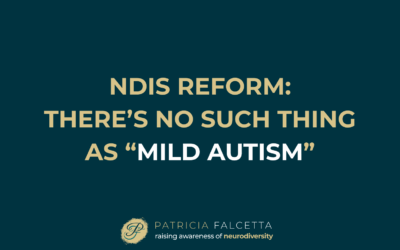Is Your Open-Plan Office Draining Your Team’s Energy?
Open-plan offices. Fluorescent lighting. Constant background noise. These design choices may seem standard – even progressive – in many modern workplaces. But for a large portion of your team, especially those who are neurodivergent, these environments can be more than just distracting. They can be disabling.
As I often say in my keynotes, particularly in my presentation at the Altro Neurodiversity Forum, physical spaces aren’t neutral. They either support us – or drain us. And for neurodivergent individuals, who often experience heightened sensory processing, design matters more than we realise.
What if your meeting room layout, lighting, or communal spaces are silently excluding the very people you’re trying to include?
In this article, we’ll explore how physical environments shape focus, energy, and inclusion – and how thoughtful, neuro-inclusive design can unlock greater wellbeing, innovation, and collaboration across your team.
Physical Spaces Shape Psychological Safety
When we talk about workplace inclusion, the conversation often centres on individual behaviour – how leaders communicate, how feedback is given, how teams collaborate. And while those things are essential, we can’t ignore the impact of the physical environment itself.
Because here’s something I ask often – in my workshops, in my keynotes, and in quiet moments with clients:
Is it the individual who is disabled – or is it the environment that’s disabling them?
For many neurodivergent people, it’s not their brain that gets in the way of doing their job – it’s the harsh lighting, the relentless background noise, the lack of control over their sensory environment. It’s the space itself that creates barriers.
True inclusive design isn’t just about ticking off accessibility checklists. It’s about reimagining space as a tool for equity – not creating special zones for a select few, but redesigning the whole to work for everyone.
The Energy Account: Is Your Environment Depositing or Withdrawing?
Every one of us has a limited supply of mental and emotional energy to get through the day – and that energy is constantly being deposited into or withdrawn from, depending on our environment.
For neurodivergent people, the balance of that energy account can be particularly fragile. Seemingly small environmental factors – flickering lights, background noise, sensory overwhelm, interruptions – can lead to a cascade of withdrawals. And when that energy account runs low, regulation becomes harder, communication breaks down, and burnout creeps in.
I use the term Energy Accounting to describe this dynamic. Just like a bank account, we all start our day with a certain number of mental credits. And throughout the day, various experiences either add to or deplete those reserves.
Meet the Framework: Sensory Risk Assessment in Practice
When I speak to organisations about inclusive design, one of the most common questions I get is: “Where do we even begin?”
That’s exactly why I developed the Sensory Risk Assessment Framework – a simple, actionable approach that helps workplaces identify and reduce sensory barriers before they create harm. This framework has evolved through years of working closely with occupational therapists to support clients, and from developing a deep understanding of sensory processing differences – particularly how profoundly interoception, proprioception, and vestibular regulation can be impacted for neurodivergent individuals.
Put simply, having a differently wired brain often means processing the world differently. And those differences matter in how people experience – and survive – their workplace environment.
The framework follows four key steps:
1. Recognise – Observe sensory elements of your space. What might be invisible to some could be overwhelming for others.
2. Assess – Seek feedback from staff. Use checklists, surveys, and conversations to understand lived experiences.
3. Mitigate – Implement practical changes like soft lighting, quiet areas, or noise-cancelling options.
4. Communicate – Encourage open conversations about needs and embed inclusive responses into daily practice.
Through this framework, organisations can create spaces that support regulation, comfort, and participation for all.
Practical Strategies for Inclusive Design
Creating a neuro-inclusive environment doesn’t require a full office redesign or an endless budget. In fact, some of the most effective changes are small, thoughtful adjustments that respect how different brains process the world.
Here are practical strategies you can implement across key areas:
• Lighting – Use natural light, dimmable fixtures, and avoid fluorescents.
• Sound – Offer quiet zones, soft furnishings, and noise-cancelling headphones.
• Layout – Create a variety of spaces including enclosed, semi-private, and open work areas.
• Smell – Avoid strong scents from cleaning products or shared kitchen areas.
• Movement – Provide flexible furniture and decompression spaces for sensory regulation.
These strategies don’t just benefit neurodivergent individuals – they enhance wellbeing and productivity for everyone.
Real Change, Real Impact
When workplaces commit to neuro-inclusive design, the change is often immediate and meaningful. One organisation I worked with realised their open-plan layout was unintentionally draining their team’s focus and energy. By implementing simple shifts – clearer zones, visual agendas, and a quiet decompression room – they saw improvements in energy, engagement, and trust.
When we design for neurodivergent needs, we don’t just include – we innovate.
Reflect and Reimagine: What’s Your Environment Really Saying?
Take a moment to consider your own workplace. Who might be excluded without you realising it? What everyday sensory features might be impacting regulation or productivity? Where might a small change make a big difference?
Ask your team:
• What parts of our space feel energising, and which feel draining?
• Are there predictable options for quiet, regulation, and rest?
• Have we made space for neurodivergent feedback in our design decisions?
Let’s Build Spaces That Empower Everyone
Design is not neutral – it signals who belongs and who doesn’t. When we take a neuro-inclusive approach to our physical spaces, we’re not just improving comfort – we’re creating access, safety, and equity.
Let’s stop designing for sameness. Let’s reimagine environments that reduce overwhelm, preserve energy, and reflect the real diversity of how people think and feel.
Let’s build spaces that empower everyone to thrive.



